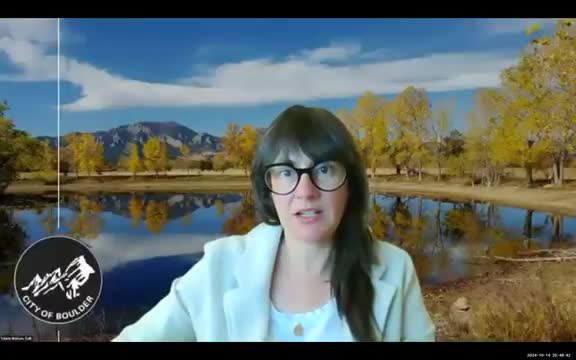City launches innovative bike and transit mapping initiative
October 14, 2024 | Boulder, Boulder County, Colorado
This article was created by AI summarizing key points discussed. AI makes mistakes, so for full details and context, please refer to the video of the full meeting. Please report any errors so we can fix them. Report an error »

During a recent Transportation Advisory Board (TAB) meeting, officials presented significant updates to Boulder’s bike, walk, and transit mapping resources, aimed at enhancing community mobility and accessibility. John McFarland, a senior transportation planner, outlined the improvements made since the last update in 2019, emphasizing the transition from static maps to interactive online versions.
The new bike map, developed through ArcGIS online, allows users to explore the entire city bike network, including recreational routes and recommended crosstown routes, which are highlighted for ease of navigation. The online map is mobile-friendly, enabling GPS tracking for users to monitor their rides. A print version has also been created, featuring a simplified legend and a subset of destinations, along with QR codes linking to the online resources.
In addition to the bike map, a dedicated walk map was introduced, which includes layers for recreational walks and points of interest, such as public art and transit options. Similar to the bike map, it is available in both online and print formats, encouraging community members to explore Boulder on foot.
Furthermore, a new interactive transit map was launched, showcasing local and regional routes operated by RTD, the city, and CU Boulder. This map allows users to click on routes and bus stops for detailed service information, enhancing the overall transit experience.
The TAB members were encouraged to provide feedback on the new maps, which are currently being distributed to community partners and local bike shops. McFarland highlighted the importance of community input in refining these resources.
In a related discussion, board member Trini raised the potential for utilizing data from the interactive maps to better understand user patterns, which could inform city services such as snow removal. This suggestion reflects a growing interest in leveraging technology to improve urban planning and resource allocation.
Overall, the updates to Boulder’s transportation mapping resources signify a commitment to improving mobility options for residents and visitors, fostering a more connected and accessible community.
The new bike map, developed through ArcGIS online, allows users to explore the entire city bike network, including recreational routes and recommended crosstown routes, which are highlighted for ease of navigation. The online map is mobile-friendly, enabling GPS tracking for users to monitor their rides. A print version has also been created, featuring a simplified legend and a subset of destinations, along with QR codes linking to the online resources.
In addition to the bike map, a dedicated walk map was introduced, which includes layers for recreational walks and points of interest, such as public art and transit options. Similar to the bike map, it is available in both online and print formats, encouraging community members to explore Boulder on foot.
Furthermore, a new interactive transit map was launched, showcasing local and regional routes operated by RTD, the city, and CU Boulder. This map allows users to click on routes and bus stops for detailed service information, enhancing the overall transit experience.
The TAB members were encouraged to provide feedback on the new maps, which are currently being distributed to community partners and local bike shops. McFarland highlighted the importance of community input in refining these resources.
In a related discussion, board member Trini raised the potential for utilizing data from the interactive maps to better understand user patterns, which could inform city services such as snow removal. This suggestion reflects a growing interest in leveraging technology to improve urban planning and resource allocation.
Overall, the updates to Boulder’s transportation mapping resources signify a commitment to improving mobility options for residents and visitors, fostering a more connected and accessible community.
View full meeting
This article is based on a recent meeting—watch the full video and explore the complete transcript for deeper insights into the discussion.
View full meeting
